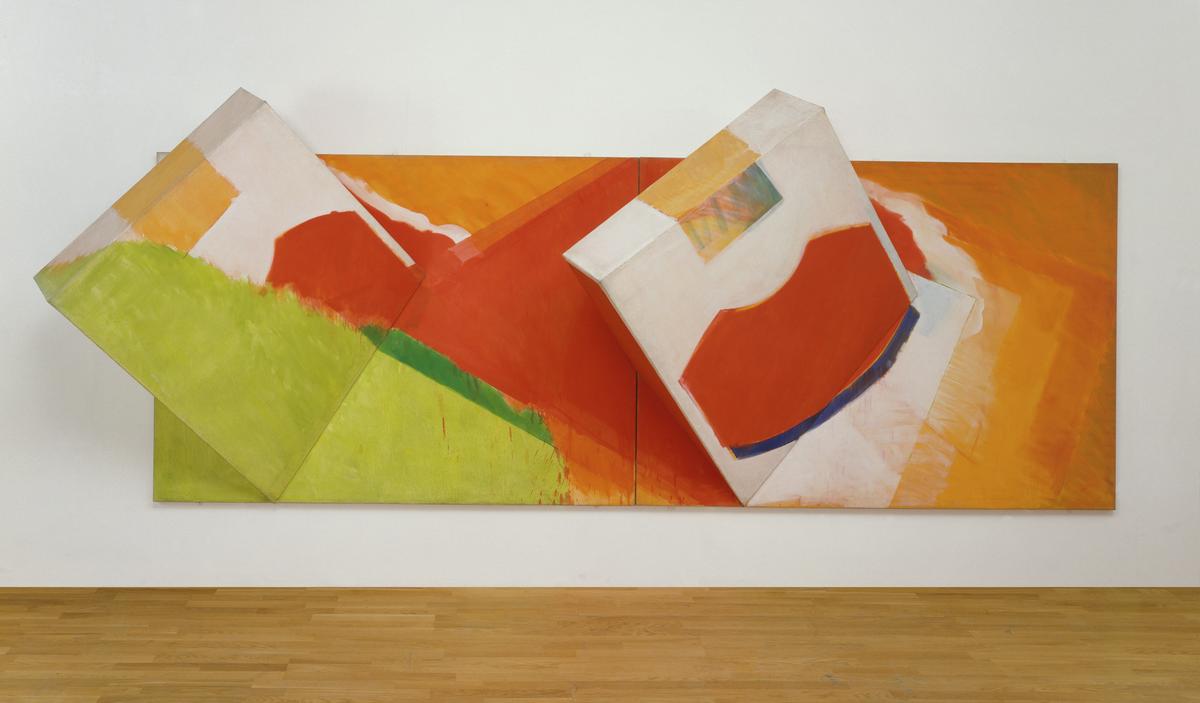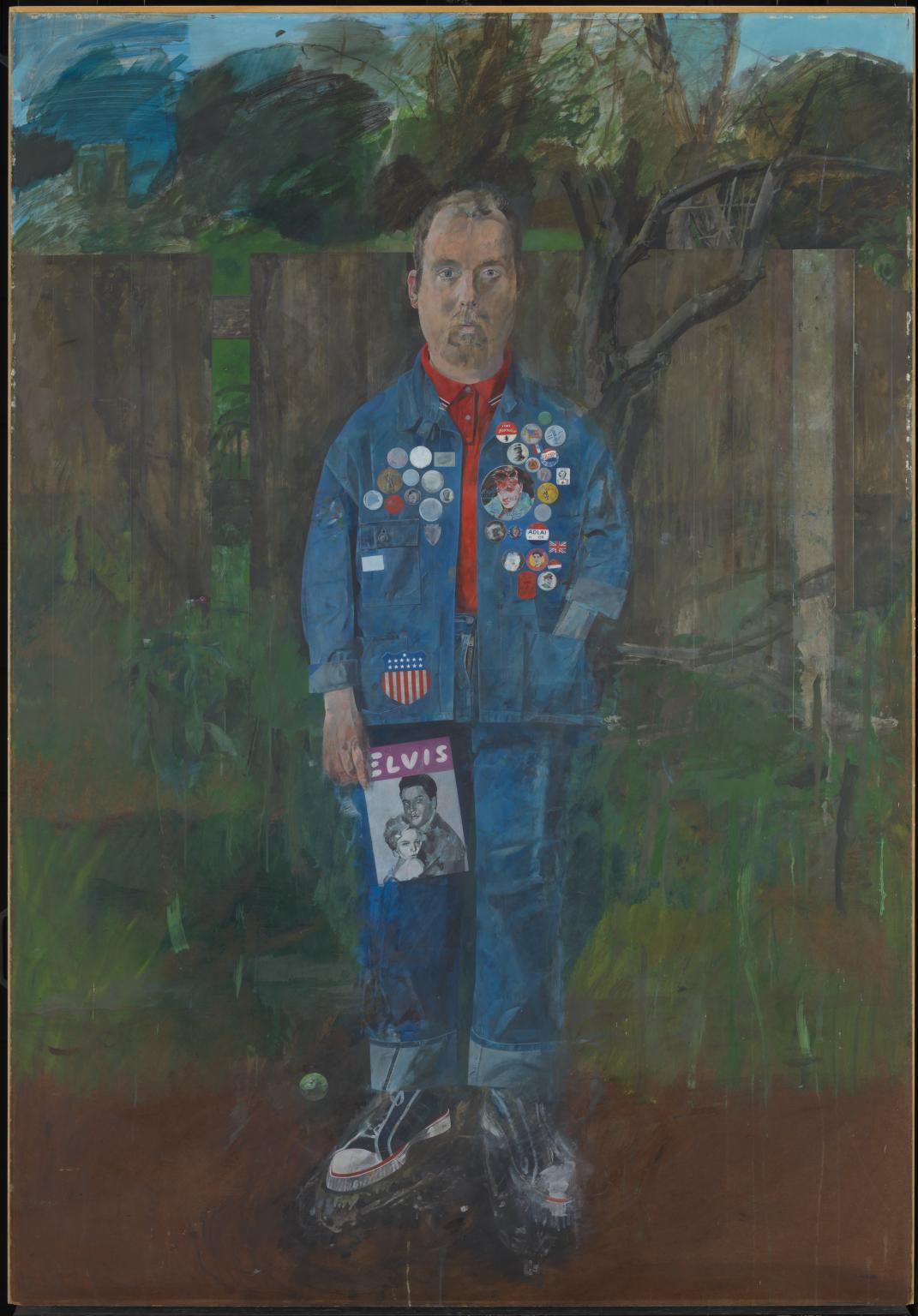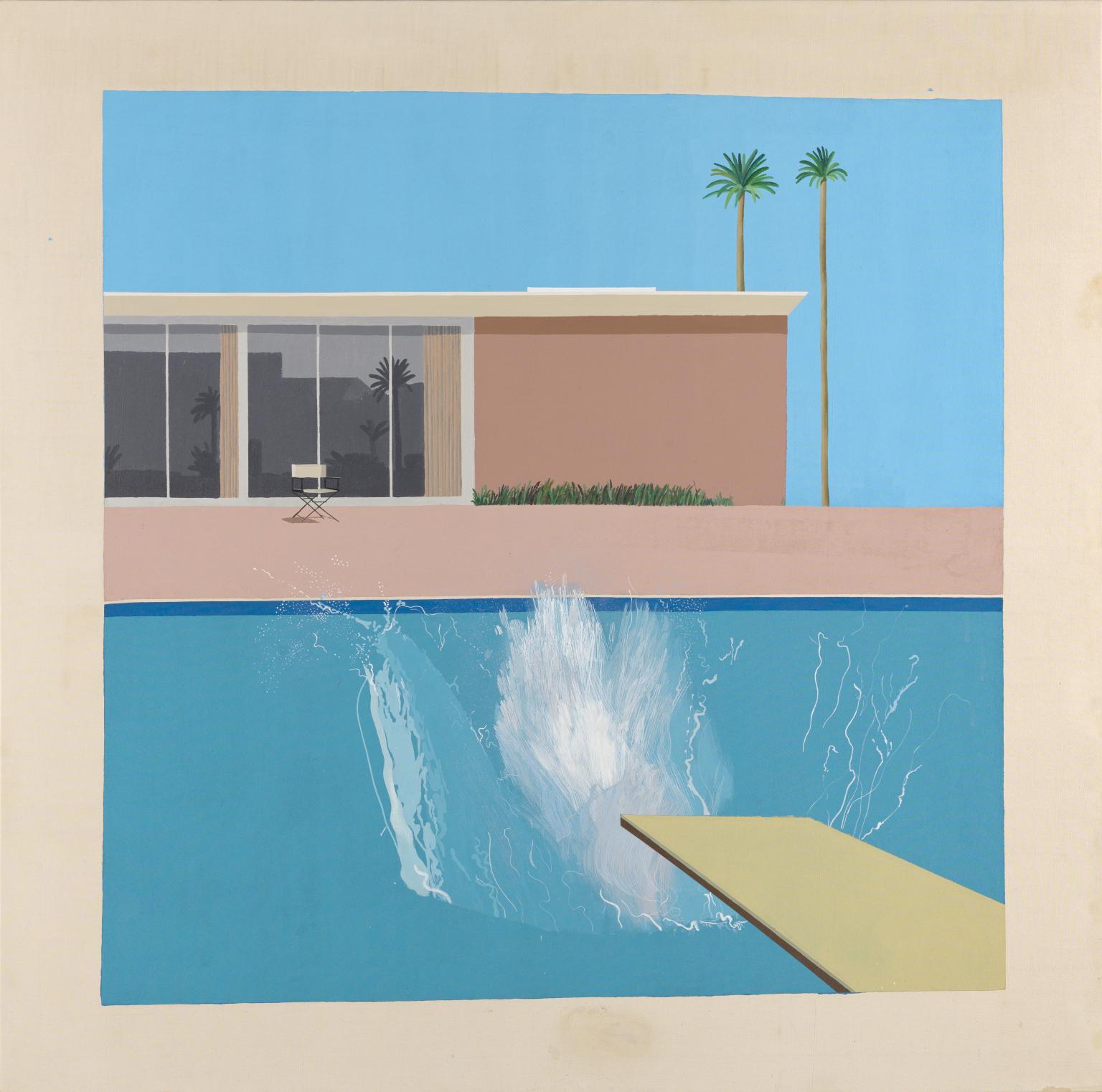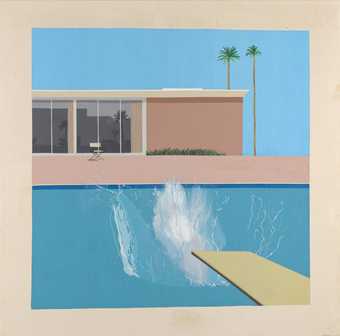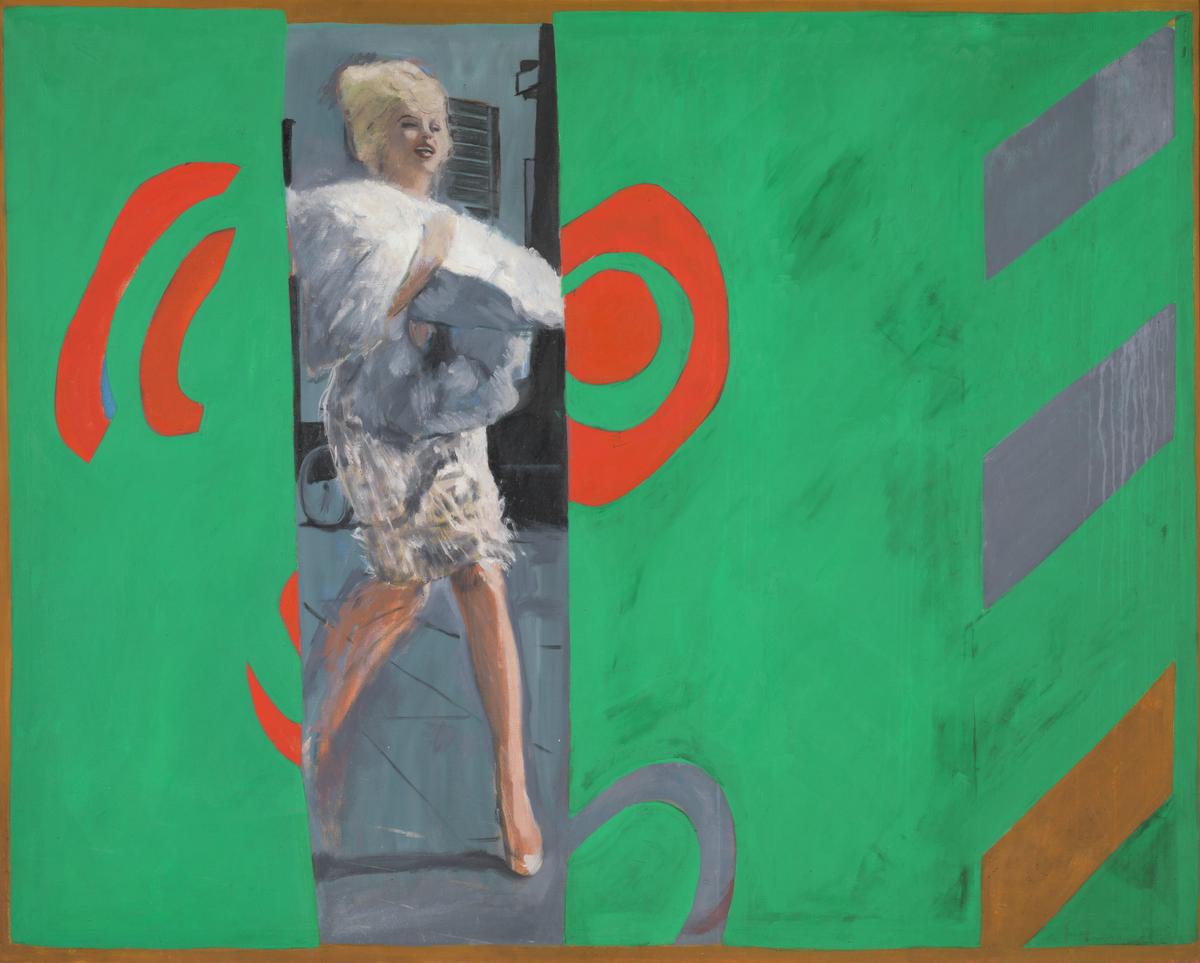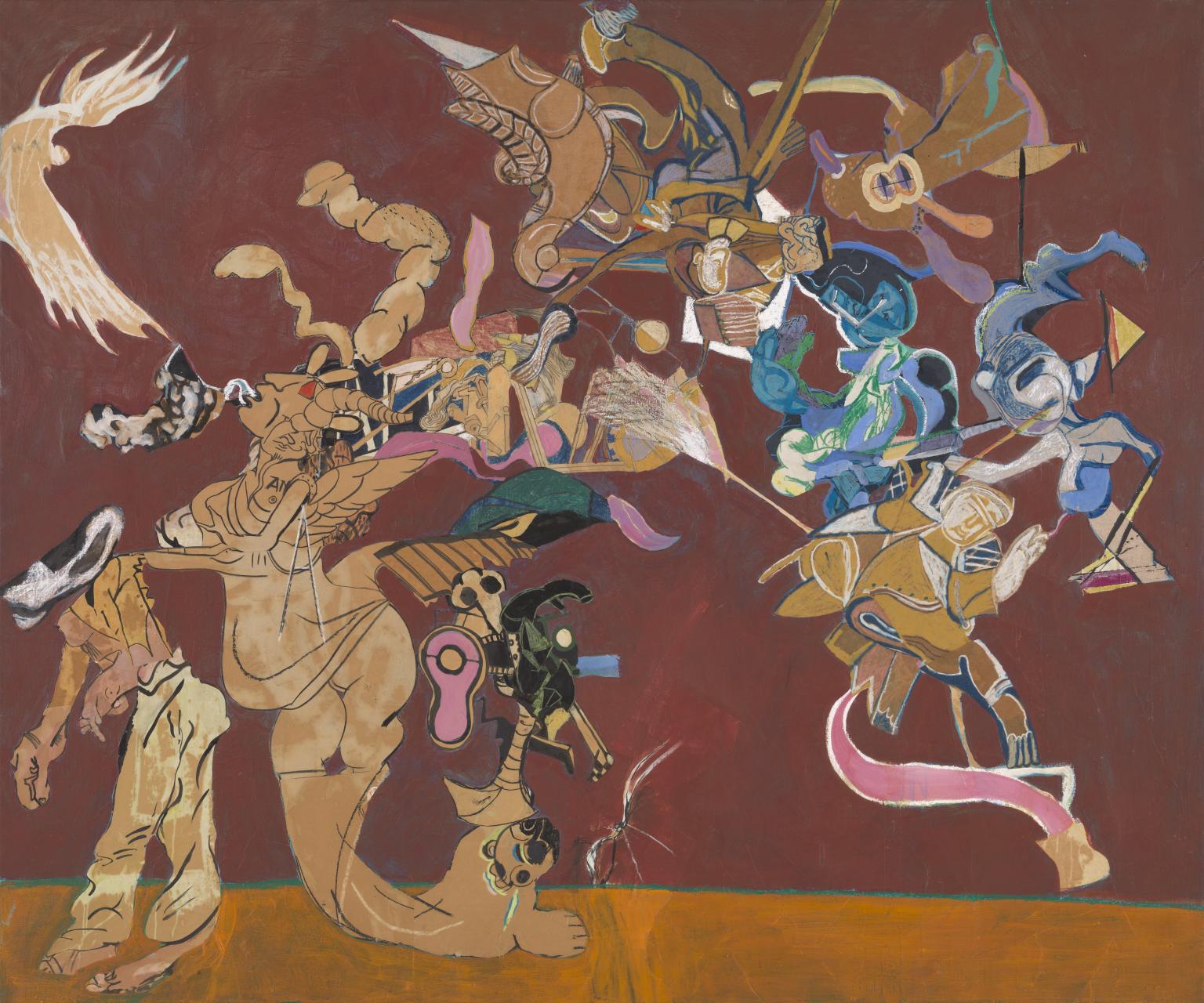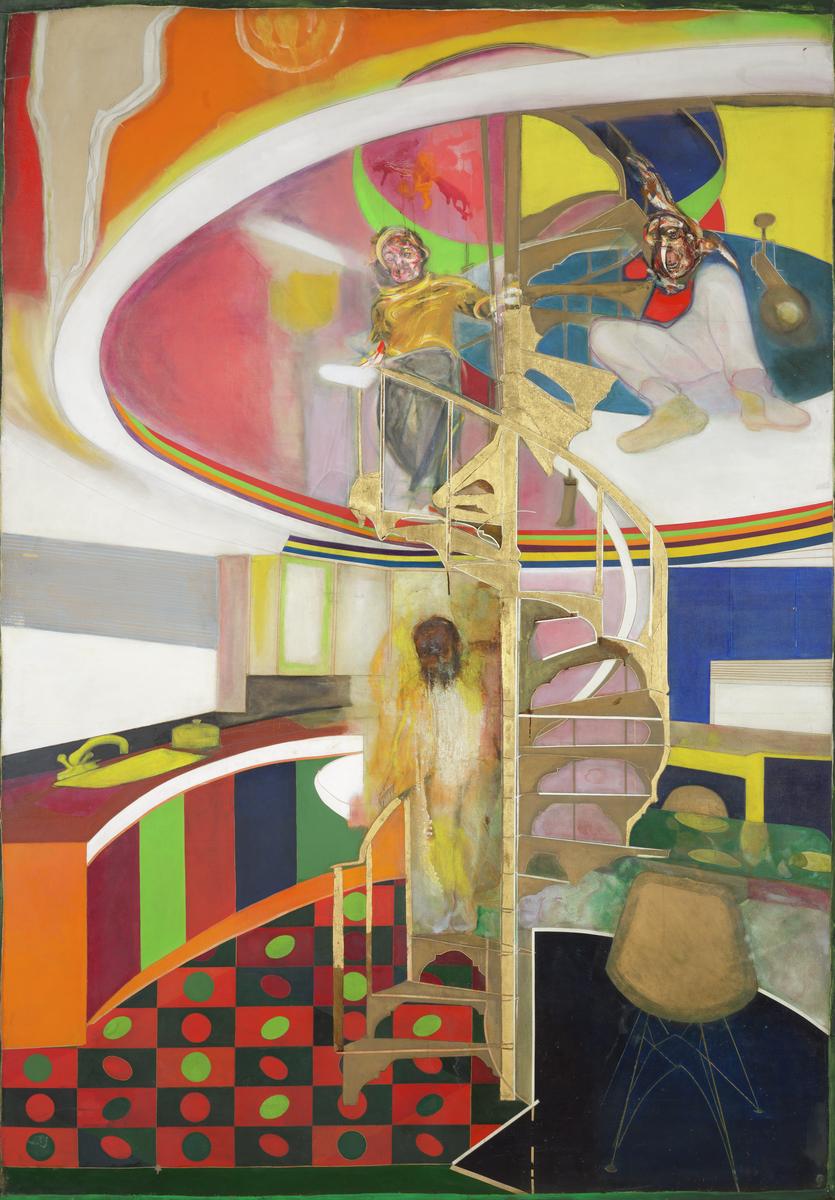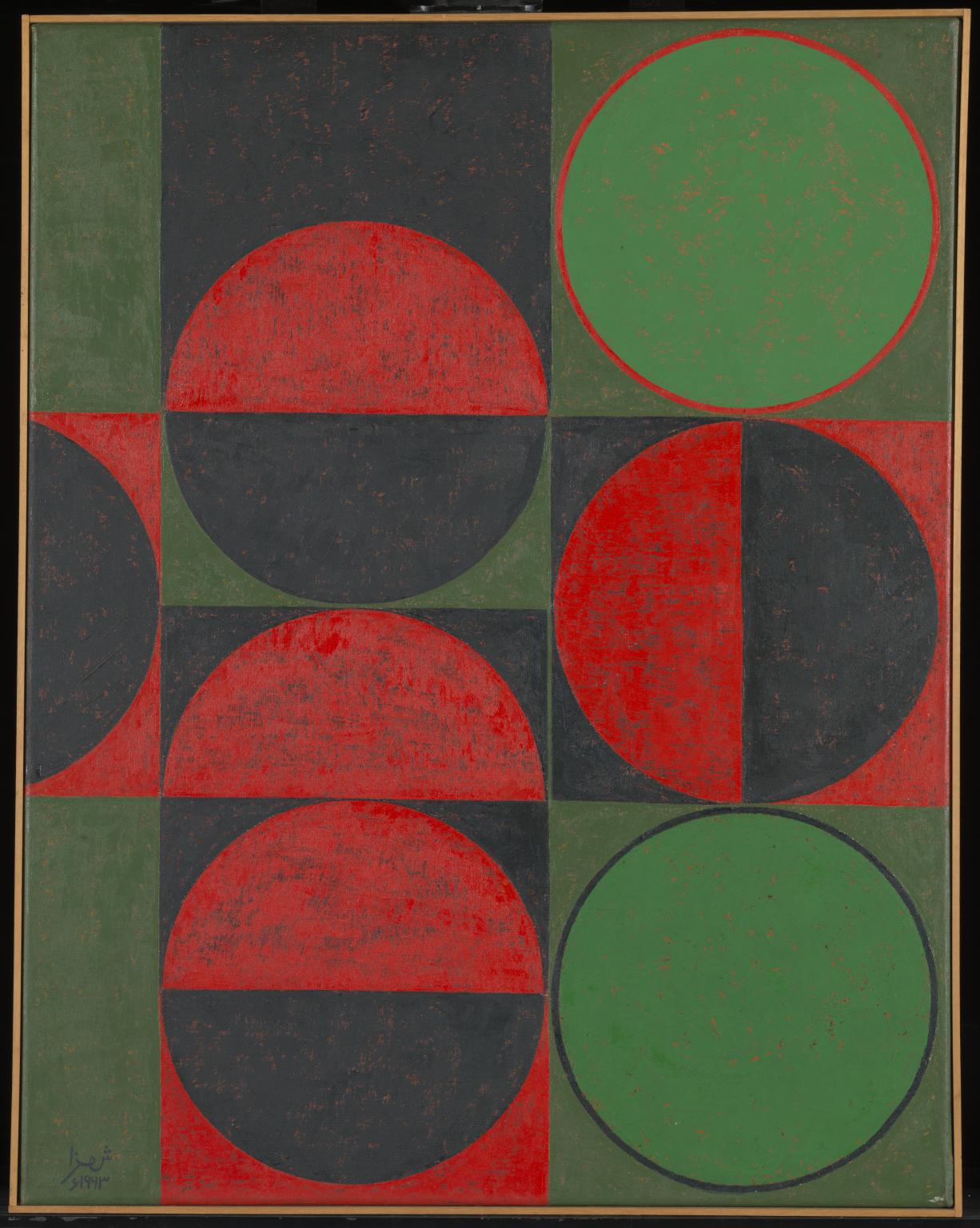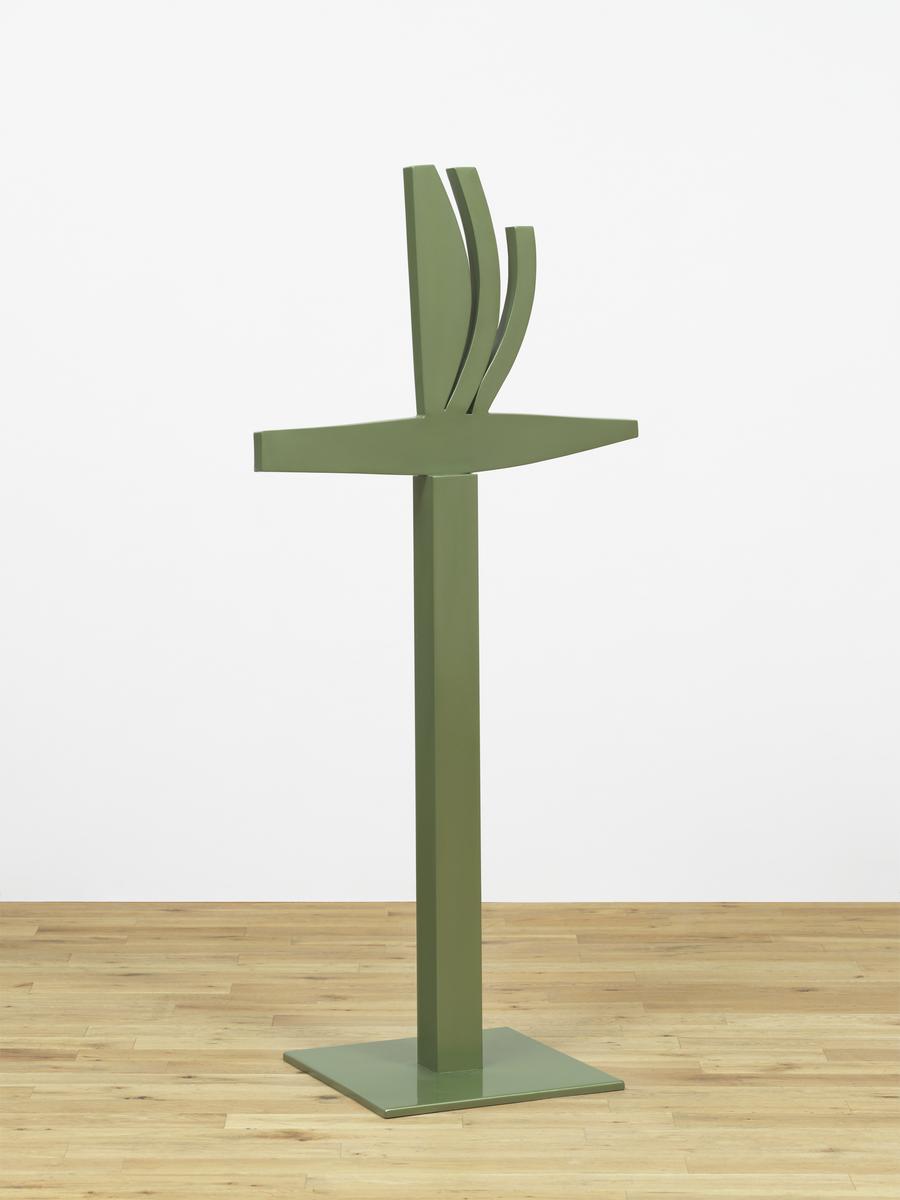Richard Smith,
Gift Wrap
1963
1963 was a year of great innovation for Smith that culminated in his show at the Kasmin Gallery, London. Drawing on both painterly American abstraction and Pop Art, he continued to make large, billboard-like paintings which had a popular, everyday subject and explored the impact of advertising and the media. However, he also began to experiment with the conventions of painting, challenging both its rectangular format and its flatness. In a work such as Vista (Tate T00855), a shaped extension was added to the two-dimensional canvas. In Giftwrap and Piano (Tate T002003) the extensions became three-dimensional. In an interview of 1966 he stated: 'in Fleetwood, as in Pagoda or Vista, for instance, with these rectangular-canvas-plus-extensions, I felt that there could be another kind of … amplification: three-dimensional, which would then enter the real world [and] come out into the spectators space.'(Quoted in Robertson p.12.) At this time Smith was fascinated with packaging. In an interview he stated: 'The carton is an incessant theme in present day civilisation … everything comes in boxes.'(Quoted in Robertson p.12.) For Smith the most ubiquitous of boxes was the cigarette pack, and in 1962 he had made a film called Trailer which consisted of close-ups of cigarette packets, repeated and seen from different angles. The imagery of the film was the inspiration for many of the works Smith painted in 1963. In the majority an originally small packet is blown up to monumental proportions. Giftwrap is over five metres long and suggests the scale of an advertising hoarding. The title and image are a direct reference to the now discontinued Philip Morris cigarette pack, which incorporated a red oval motif with a segment cut out of it. In an unpublished Tate interview, Smith recalled that it was the only American cigarette pack readily available in British tobacconists and it was the brand that he himself smoked at the time. It thus expresses some of his deep pre-occupation with America and American things (in 1964 he was to emigrate to the United States). In Giftwrap, two three-dimensional boxes burst out of the two-dimensional surface. Painted to resemble cigarette packs, the canvas box constructions rupture painting's conventional flatness, breaking into the real space of the gallery. Giftwrap, like Piano, was made in Smith's Bath Street studio in London. First making small maquettes out of cardboard boxes from Windsor and Newton oil colours, he then preceded directly to the construction stage without producing drawings. Each work was made of two parts bolted together and then painted in bright artificial colours. Considering the sculptural quality of the works, Smith stated: 'There is something unnerving about a bulky thing that is suspended on the wall: it can fall. A bulky thing that is on the floor is something that's in the way … It was like having a sofa over the mantle piece'(Quoted in Smith p.2). However, despite the fact that Smith spoke of Giftwrap and Piano in apparently sculptural terms, he emphasised their importance as paintings: 'Since I have always retained a wall, there is no question of a multifaceted sculptural object.'(Quoted in Robertson p.13.) Smith was never to go as far as producing completely free standing sculptures, but rather explored the ambiguous area between painting and sculpture, the real and the illusory, thus challenging the conventions of painting. Further Reading:David Mellor, The Sixties Art Scene in London, exhibition catalogue, Barbican Art Gallery, London 1993, pp.124-128, reproduced (colour) p.128Marco Livingstone, Pop Art: A Continuing History, London 1990, pp.109-111, reproduced (colour) p.100Bryan Robertson, Richard Smith Paintings 1958-1966, exhibition catalogue, Whitechapel Art Gallery, London 1966Richard Smith, Richard Smith, exhibition catalogue, British Pavilion, Venice Biennale, British Council, London 1966 Imogen Cornwall-Jones October 2001


